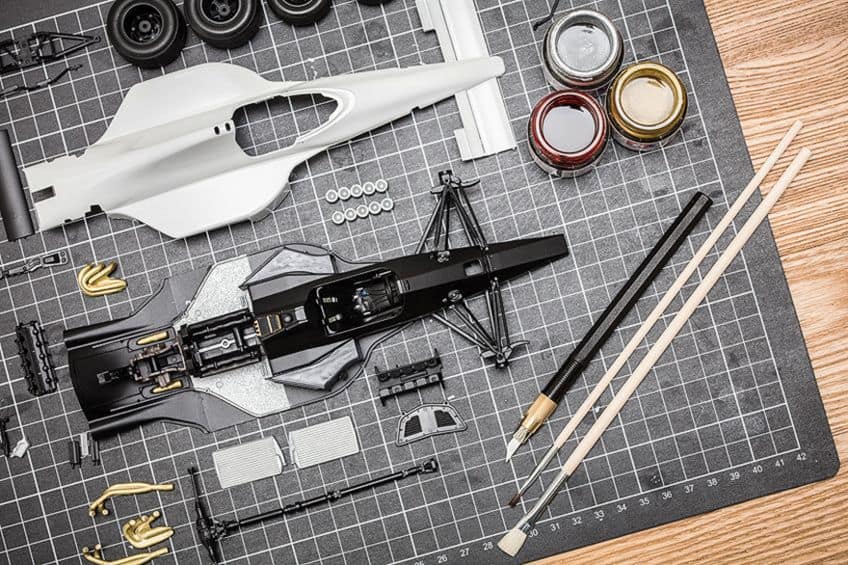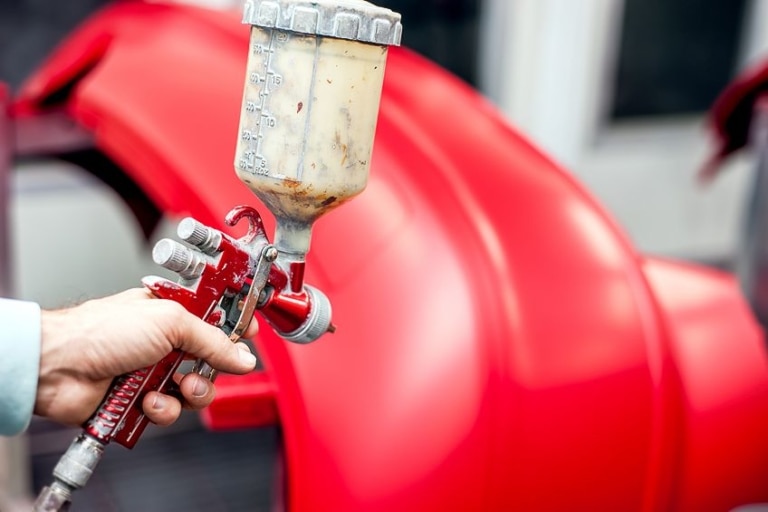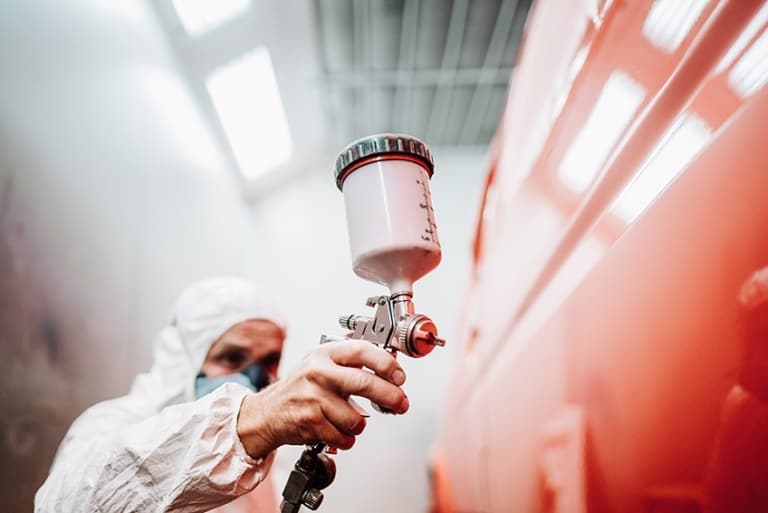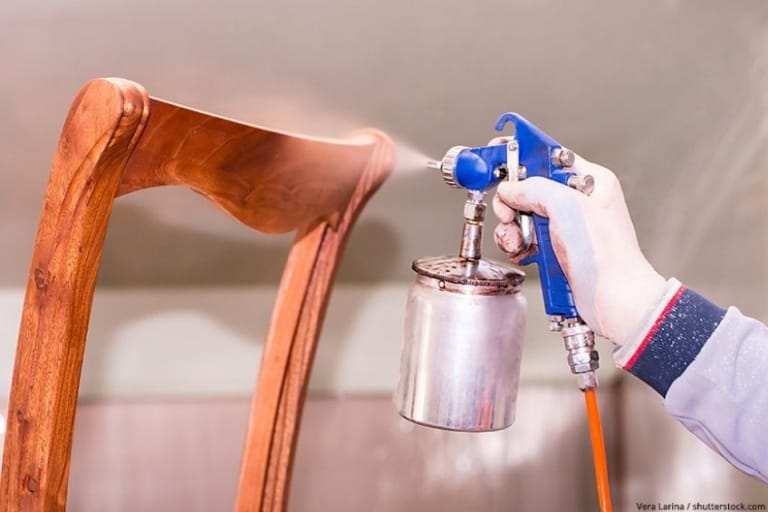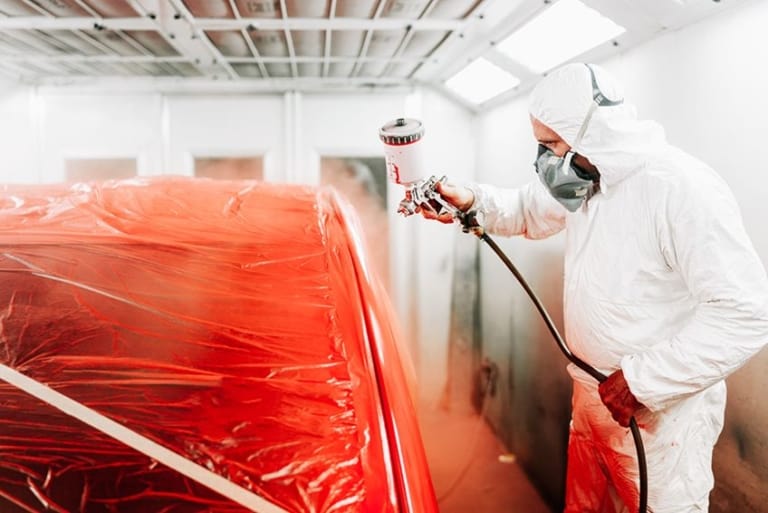Acrylic Paint on Plastic – Will Acrylic Paint Stick to Plastic?
Disclosure: There are some affiliate links below and I may receive commissions for purchases made through links in this post, at now additional cost for you.
Working with acrylic paint on plastic is not ideal, so you will require a few more steps and a little more work when working with acrylic paint and plastic instead of something like canvas. But it is possible and, in this article, we will provide you with the knowledge required to work on plastic with acrylic paints and ensure that your surface is prepared adequately so that your artwork is durable. We will also recommend a selection of acrylic paints you should use when working on plastic.
Table of Contents
Painting on Plastic
Will acrylic paint adhere to plastic? The short answer is no, not unless you have some knowledge of the substances being utilized and a little hard work. While using plastic might seem like an exciting option for showing off your creative side, you will be required to prepare your surface first to ensure that the paint sticks.
Before we start to explain how to prepare your plastic surface so that you can paint on it and be confident that the paint will stick, we need to address the burning question: Why does acrylic paint not want to stick to plastic?
You will need to look towards the laws of physics to address this question. We could spend a lot of time analyzing the many factors that impact how liquids adhere to solids, but at the end of the day, it is how similar the substances (in this case, plastic and paint) are to each other in terms of surface tension.

How the paint (or liquid) interacts with the plastic surface illustrates the degree of “wetting” that is occurring. When the paint forms into a bead, much like water on plastic, there is a high difference in the surface tensions. This high difference means that the surface is not ideal for painting, meaning that the paint will simply slide off and will not adhere to plastic.
As a painter, you require a surface that has great wetting, and it can take a long time to achieve the correct level of wetting that will result in the paint looking like it spreads evenly.
Plastic has some other elements that make it react so negatively to acrylic paint, such as being non-porous, having low polarity, and being hydrophobic (properties that specifically repel water). But, if you have chosen to paint on plastic, acrylic plastic, polycarbonates, vinyl, ABS plastic, certain forms of PVC, PET (polyester), and urethane plastic, you will have to use acrylic paint.
Best Acrylic Paint for Plastic
It is a given that you will have to spend time preparing your plastic surface to paint on it, and we will go into further details on preparation later in this article. Before you can start to paint, however, you have to purchase the paint itself. We recommend that you invest a little more of your time and money into selecting paint that has been specifically formulated to be used on plastic. This will stop you from using the incorrect paint and it subsequently peeling off. What follows are some of our recommendations in terms of paint that is best for use on plastic.
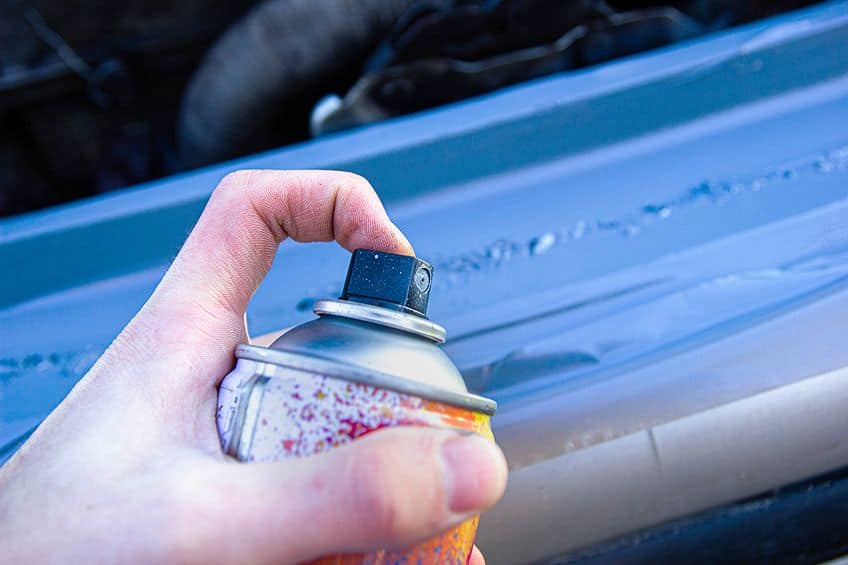
Best Combo of Paint and Primer: KRYLON Fusion All-in-One Spray Paint
What makes this particular product so fantastic is that if you wish to use it on plastic, there is no need to prime your plastic surface first. Of course, you will still need to clean and sand down your plastic, but this paint does not require priming as the spray is a two-in-one combination of both primer and paint! Quick-drying and easy to use, you simply need to consult the instructions on the can. This particular brand also makes spray paint products that do not include primer, if you are someone who would prefer to prime the surface before painting.
- Delivers best-in-class adhesion, durability, and rust protection
- Spray bonds to difficult surfaces without sanding or priming
- Get maximum rust protection on both indoor and outdoor projects
PROS
- Available in both gloss and matte options
- Can be used on an assortment of surfaces including plastic, wood, and metal
- Available in several different textures and colors
- Can be utilized on both exterior and interior items
- Takes less than an hour to dry
- Provides you with both a primer and paint
- Can be applied by spraying at an angle
- Protects metal surfaces against rust
CONS
- You may need to apply several coats
- Paint can potentially run if not applied correctly
Best Spray Paint: RUST-OLEUM American Accents Spray Paint
This product has been formulated to allow it to adhere to almost all surfaces, including plastic. This is a particularly useful product, available in an assortment of unique colors that include French lilac, deep teal, and claret wine. It is also available in several finishes, such as matte, satin, and high gloss. The paint is simple to apply, dries super-fast, and the tip allows you to spray at any angle, allowing you to access any hard-to-reach places. With this spray paint, you will achieve a top-quality finish that is durable with a bright color and amazing coverage.
- Smooth, long-lasting satin finish that will not chip, fade, or peel
- Can be used outdoors or indoors on wood, wicker, metal, and more
- Fast-drying and available in a broad assortment of designer colors
PROS
- User-friendly
- Can be used on several surfaces, including plastic
- Provides good coverage
- Durable
- Can be applied at any angle
CONS
- Fumes given off are pungent
- Expensive
Best Acrylic Sealer: KRYLON Acrylic Clear Acrylic Coating
When you have finished painting, it is necessary to seal your work with a clear coating to protect it from wear and tear and the elements. This sealer by Krylon is reliable and dries quickly, making it a popular option. The sealer provides you with a finish that is crystal-clear and will not yellow with time. It can be used on both indoor and outdoor items and offers you protection from both moisture and UV rays. The product comes in a spray can, meaning that you should not have any visible brush strokes showing.
- Acrylic coating spray provides a permanent protective coating
- Crystal-clear gloss finish will not yellow with age
- Moisture resistant and smudge-proof
PROS
- Crystal-clear finish
- Will not yellow over time
- Dries quickly
- Provides UV protection
- Resistant to moisture
CONS
- Emits toxic fumes
How to Use Acrylic Paint on Plastic
Before beginning to paint on plastic, the surface will need to be sufficiently prepared. Several methods are used within an industrial setting to alter the nature of the plastic in order to allow the paint to adhere. Such methods include corona treatment, flame, and thermal treatment. One would use specialized equipment for these methods, meaning that they are not possible for the average DIY-er to attempt at home. There are, however, other simpler methods that can be attempted at home to achieve an adequate surface on which you can use your acrylic paint for plastic.

Preparations
Plastic is well-known for having a surface that is hard to paint on, which means that if you do not prepare the surface correctly, your acrylic paint will not stick. Cleaning and sanding down the surface are two necessary aspects of preparation, and once this is done, you can then apply your primer. The primer provides a foundation for the paint that allows the paint to adhere to the plastic.
Cleaning Your Surface
One of the factors that can stop paint from sticking to the surface of the plastic is the interference of certain substances or particles on the surface. This may include dust, grease, dirt, fingerprints, oil, and plasticizers (these are an additive that alters the qualities of a substance during its production, such as causing the plastic to be more flexible). There are several grease removal products and cleaning agents that will be able to assist you with this problem quickly.
Your plastic may look harmless from afar, but if it has not been cleaned before you begin painting, the plasticizers could emerge when you have completed your painting and cause the surface to become sticky. If this does occur, it is very hard – even impossible – to reverse the situation and begin again.
It is not just plastic that you will need to clean before you can paint on it; this is necessary for most surfaces that you wish to paint on so as to ensure that your paint adheres to the surface sufficiently.
Roughening Your Plastic
Before you prime the surface of your plastic, you will need to roughen it up so as to create an abrasive surface that the paint can stick to. Once the plastic has been degreased, you can use fine-grit sandpaper to sand the surface gently. Clean away any loose particles using a soft duster and then repeat the degreasing and cleaning process. If you are working on a large surface, you can use a sanding machine to make the process go quicker, although this can make it hard to reach tight spots.
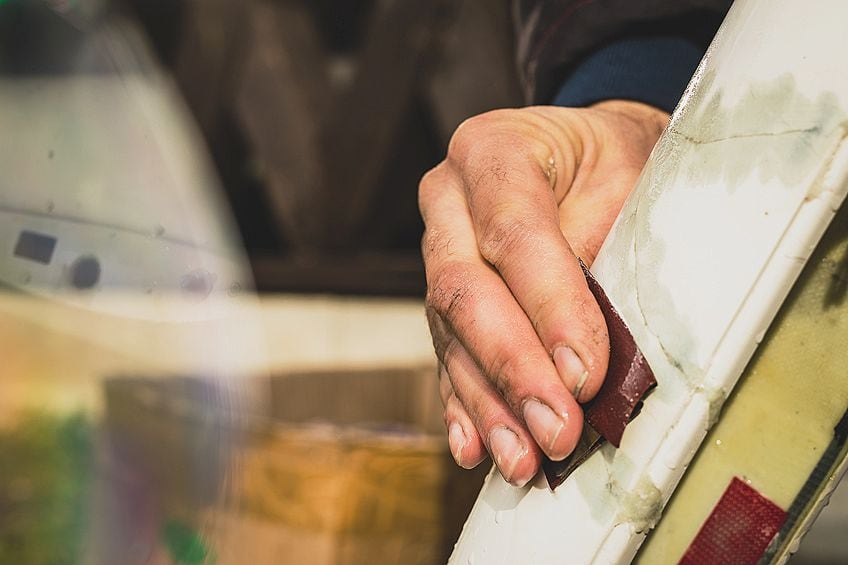
Priming Your Plastic
It is now time to apply your primer to the plastic, which will provide increased surface adhesion. It can be applied either by spraying it on or using a brush. Consult the instructions on the packaging of your primer to determine the drying time and if it is necessary to allow it to stand for some time before you can begin applying paint over it. The majority of people select a two-in-one primer and spray paint option as it requires less work and works out cheaper.
Using Acrylic Paint on Plastic
When painting on plastic, the paint can be applied either with the use of a brush or by spraying it on. If you have selected to spray the paint, make sure you spray evenly, holding the can several inches away from the surface to stop the paint from accumulating in a particular spot. You will receive instructions with the paint when you purchase it in terms of the required number of coats to apply and the length of time it will take for the paint to dry. The instructions will also outline the surface preparation required before you can begin painting.
You will have to use tape to control where the paint goes – this is necessary regardless of which paint you are using. Keep in mind that if you have used tape to create straight, clean lines, always try to remember to remove the tape before the paint has dried. Once the paint has dried and you remove the tape, it can cause the paint to flake off.
When using acrylic paint to paint on plastic, keep in mind that thicker paint will not adhere to the plastic as well as thinner paint will.
If this is your first time applying paint on plastic, ensure that before you begin applying the paint, you see the actual color. Some brands might have the same paint color names, but the colors ultimately do not look the same when applied and dried.
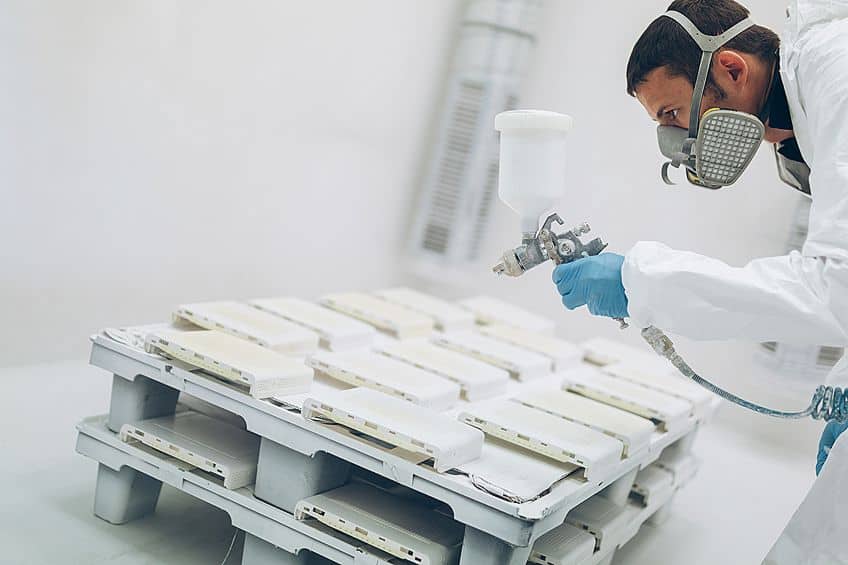
Sealing Acrylic Paint on Plastic
Applying a sealer over your paint offers you a layer of protection that is crystal clear. Once you have finished painting and have allowed the paint time to dry and cure completely, you can then apply a sealer. Sealers are available in either a gloss or matte finish, and much like paint, you can apply it using either a brush or a spray can.
If you are painting an object that will be placed outside or will be handled often, it is necessary to seal it. However, if your item will be placed inside and will not be handled much, it is not necessary to use a sealer.
Before you apply the sealant, ensure that your paint is completely dry. You might require a second coat of sealant to guarantee an airtight finish that can protect your item from the elements. Ensure that each coat is allowed to dry and cure completely before you apply the next.
We are in no way exaggerating when we say that realistically, paint and plastic are not suited for one another. In fact, there is an assortment of other paints and surfaces that one would find easier to work with. That being said, using the correct plastic and paint with a little bit of hard work will ensure that you achieve good adhesion and a long-lasting finish.
We hope that this article has provided you with all the knowledge you need to paint plastic with acrylic paint, from preparing the surface accordingly to ensuring that you have selected the correct products such as primer, paint, and sealant.
Frequently Asked Questions
Can Acrylic Paint Be Applied to a Plastic Surface?
You can use acrylic paint on plastic but, as the plastic is not porous, it does not absorb the paint. It is much easier to use other materials to paint on with acrylic paint such as board or canvas. If you do choose to paint with acrylic paint on plastic, you will need to prepare the surface by cleaning it, sanding, and priming your plastic surface. Keep in mind that certain acrylic paints work better on certain plastics.
What Product Can Be Used to Seal Acrylic Paint?
There are several products available that can be used as a sealer, which can be purchased in either gloss or matte finish. You can apply a sealer by spraying it onto your paint or by using a liquid sealer. You will find an assortment of reliable products that can help you from brands such as Krylon and Rust-Oleum. Ensure that each coat of sealer has dried and cured completely before you apply the following coat. You will only need to seal items that are going to be handled often or will be placed outside.
How Can I Get My Paint to Stick to a Plastic Surface?
There are several methods to increase the acrylic paint’s adhesion on plastic. You will begin by cleaning the plastic (there are several specific products available that you can use to clean off all additives, grease, and oil). Next, you can use fine-grit sandpaper to sand the plastic down. When you have finished sanding, ensure that any dust is cleaned away. You can now paint a thin layer of primer and allow it time to dry before you begin applying the paint. In an industrial setting, there is an assortment of processes that occur to allow the paint to settle on and adhere to the plastic.
Which Paint Can I Apply to Plastic?
You can use acrylic, enamel, or oil paint on plastic. Plastic is not the best substrate to apply acrylic paint to. Certain paints are better to use on plastic than others, as they have specifically designed properties for use on plastic. We recommend that you do your homework before selecting your paint. Certain plastics have better adhesion properties that allow the paint to adhere better, such as polycarbonates, vinyl, and polyester, to name a few.
Will Acrylic Paint Adhere to Plastic?
Acrylic paint does not adhere to plastic. You will therefore have to do some work to prepare the plastic to allow the paint to adhere. Certain acrylic paints are better suited for use on plastic, so ensure that you select the correct paint. Similarly, certain plastics work better than others. If you paint on vinyl, polyester, or PVC, you will have greater success as they are better suited for paint.

